The building vibration isolation market is expected to grow from USD 1.8 billion in 2020 to USD 2.91 billion by 2028, at a CAGR of 5.5% during the forecast period 2021-2028.
The building vibration isolation is a vibration control solution utilized to support building structures and buildings to protect from vibrations and low-frequency ground-borne noise generated by external sources like underground railways. Making vibration isolation aims to achieve superior combined system performance of structural integrity, vibration control & buildability, and load-bearing capacity. The positive outcome of the building vibration isolation project is reliant on the consideration of the entire building design and the performance of the isolation bearings. The building vibration isolation is sheets or pads of flexible materials such as rubber, dense foam, cork, laminate materials, and elastomers.
Increasing urbanization has led to urban density. Growing infrastructure on any available profitable land has permitted buildings to construct in close proximity to existing industrial development sites or existing transportation infrastructure. The rise in new construction sites & businesses has resulted in growth for building vibration isolation solutions. The expansion in industrialization also has created a surge for making vibration isolation market. Building vibration isolation is used to safeguard the infrastructure from high-frequency vibration and sounds, because of which there is a rise in demand for building vibration isolation. The building vibration isolation has primarily penetrated the industrial and commercial sectors. These are the factors driving the global building vibration isolation market. On the contrary, lack of awareness of the product's availability and lack of penetration in developing nation markets is the factor that limits the global building vibration isolation market.
This study delivers a comprehensive analysis of form, material, end-use, and region. The form segment includes blocks, modules, and mats/pads. The mats/pads are leading the form segment. The growth is attributed to its extensive use in various commercial and industrial applications due to its easy installation and exceptional performance. The mats/pads are proven to effectively control the resonant vibration and structure-borne noise. The material segment involves resin bonded cork & recycled rubber, resin bonded recycled rubber, virgin polyurethane, and cork & natural rubber engineered compound. The resin bonded cork & recycled rubber is leading the material segment. The growth is attributed to the effective use of resin bonded cork & recycled rubber to build vibration isolation because of several advantages offered, such as long-term durability, high damping, recycled products, high vibration isolation, etc. The resin bonded cork & recycled rubber is widely used in restaurants, gyms, office spaces, hotels, and residential homes. The end-use segment involves industrial, residential, and commercial. The residential is leading the end-use segment. The growth is attributed to a hike in residential construction worldwide due to the rise in urbanization. With the growth in world population, building vibration isolation has increased because the buildings are being constructed in any available profitable land. The increasing government regulations and development in greenhouse infrastructure to reduce greenhouse gas emissions require a significant amount of building vibration isolation.
The market has been divided into North America, Europe, Asia-Pacific, Middle East & Africa, and South America. The Asia-Pacific is leading the regional segment. The growth is attributed to the accelerated adoption rate of the building vibration isolation solution due to increasing awareness regarding the product and its benefits. The government has taken initiatives to promote the use of building vibration isolation. The rigid government norms and subsidies to encourage creating vibration isolation have driven the demand in the Asia-Pacific region.
Some of the notable players in the building vibration isolation market are KRAIBURG, Getzner, VibraSystems Inc., Regupol BSW GmbH, Acoustic Control Engineers, Farrat, Mason Industries Inc., GMT Rubber Metal Technic Ltd., Vibrant Eliminator Co. Inc., and Endine Inc.
Building Vibration Isolation Market Analysis and Forecast, Material
Building Vibration Isolation Market Analysis and Forecast, Form
Building Vibration Isolation Market Analysis and Forecast, End-use
Building Vibration Isolation Market Analysis and Forecast, Region
Report Description:
1. Introduction
1.1. Objectives of the Study
1.2. Market Definition
1.3. Research Scope
1.4. Currency
1.5. Key Target Audience
2. Research Methodology and Assumptions
3. Executive Summary
4. Premium Insights
4.1. Porter’s Five Forces Analysis
4.2. Value Chain Analysis
4.3. Top Investment Pockets
4.3.1. Market Attractiveness Analysis By Form
4.3.2. Market Attractiveness Analysis By End-use
4.3.3. Market Attractiveness Analysis By Material
4.3.4. Market Attractiveness Analysis By Region
4.4. Industry Trends
5. Market Dynamics
5.1. Market Evaluation
5.2. Drivers
5.2.1. Increase in favourable government policies
5.2.2. Rise in residential construction
5.3. Restrains
5.3.1. Lack of awareness about the product
5.4. Opportunities
5.4.1. Demand from Asia-Pacific region developing countries
6. Global Building Vibration Isolation Market Analysis and Forecast, By Form
6.1. Segment Overview
6.2. Blocks
6.3. Module
6.4. Mats/Pads
7. Global Building Vibration Isolation Market Analysis and Forecast, By End-use
7.1. Segment Overview
7.2. Commercial
7.3. Residential
7.4. Industrial
8. Global Building Vibration Isolation Market Analysis and Forecast, By Material
8.1. Segment Overview
8.2. Resin bonded cork & recycled rubber
8.3. Virgin polyurethane
8.4. Resin bonded recycled rubber
8.5. Cork & natural rubber engineered compound
9. Global Building Vibration Isolation Market Analysis and Forecast, By Regional Analysis
9.1. Segment Overview
9.2. North America
9.2.1. U.S.
9.2.2. Canada
9.2.3. Mexico
9.3. Europe
9.3.1. Germany
9.3.2. France
9.3.3. U.K.
9.3.4. Italy
9.3.5. Spain
9.4. Asia-Pacific
9.4.1. Japan
9.4.2. China
9.4.3. India
9.5. South America
9.5.1. Brazil
9.6. Middle East and Africa
9.6.1. UAE
9.6.2. South Africa
10. Global Building Vibration Isolation Market-Competitive Landscape
10.1. Overview
10.2. Market Share of Key Players in Global Building Vibration Isolation Market
10.2.1. Global Company Market Share
10.2.2. North America Company Market Share
10.2.3. Europe Company Market Share
10.2.4. APAC Company Market Share
10.3. Competitive Situations and Trends
10.3.1. Form Launches and Developments
10.3.2. Partnerships, Collaborations, and Agreements
10.3.3. Mergers & Acquisitions
10.3.4. Expansions
11. Company Profiles
11.1. KRAIBURG
11.1.1. Business Overview
11.1.2. Company Snapshot
11.1.3. Company Market Share Analysis
11.1.4. Company Product Portfolio
11.1.5. Recent Developments
11.1.6. SWOT Analysis
11.2. Getzner
11.2.1. Business Overview
11.2.2. Company Snapshot
11.2.3. Company Market Share Analysis
11.2.4. Company Product Portfolio
11.2.5. Recent Developments
11.2.6. SWOT Analysis
11.3. VibraSystems Inc.
11.3.1. Business Overview
11.3.2. Company Snapshot
11.3.3. Company Market Share Analysis
11.3.4. Company Product Portfolio
11.3.5. Recent Developments
11.3.6. SWOT Analysis
11.4. Regupol BSW GmbH
11.4.1. Business Overview
11.4.2. Company Snapshot
11.4.3. Company Market Share Analysis
11.4.4. Company Product Portfolio
11.4.5. Recent Developments
11.4.6. SWOT Analysis
11.5. Acoustic Control Engineers
11.5.1. Business Overview
11.5.2. Company Snapshot
11.5.3. Company Market Share Analysis
11.5.4. Company Product Portfolio
11.5.5. Recent Developments
11.5.6. SWOT Analysis
11.6. Farrat
11.6.1. Business Overview
11.6.2. Company Snapshot
11.6.3. Company Market Share Analysis
11.6.4. Company Product Portfolio
11.6.5. Recent Developments
11.6.6. SWOT Analysis
11.7. Mason Industries Inc.
11.7.1. Business Overview
11.7.2. Company Snapshot
11.7.3. Company Market Share Analysis
11.7.4. Company Product Portfolio
11.7.5. Recent Developments
11.7.6. SWOT Analysis
11.8. GMT Rubber Metal Technic Ltd.
11.8.1. Business Overview
11.8.2. Company Snapshot
11.8.3. Company Market Share Analysis
11.8.4. Company Product Portfolio
11.8.5. Recent Developments
11.8.6. SWOT Analysis
11.9. Vibrant Eliminator Co. Inc.
11.9.1. Business Overview
11.9.2. Company Snapshot
11.9.3. Company Market Share Analysis
11.9.4. Company Product Portfolio
11.9.5. Recent Developments
11.9.6. SWOT Analysis
11.10. Endine Inc.
11.10.1. Business Overview
11.10.2. Company Snapshot
11.10.3. Company Market Share Analysis
11.10.4. Company Product Portfolio
11.10.5. Recent Developments
11.10.6. SWOT Analysis
List of Table
1. Global Building Vibration Isolation Market, By End-use, 2018-2028 (USD Billion)
2. Global Commercial, Building Vibration Isolation Market, By Region, 2018-2028 (USD Billion)
3. Global Industrial, Building Vibration Isolation Market, By Region, 2018-2028 (USD Billion)
4. Global Residential, Building Vibration Isolation Market, By Region, 2018-2028 (USD Billion)
5. Global Building Vibration Isolation Market, By Form, 2018-2028 (USD Billion)
6. Global Blocks, Building Vibration Isolation Market, By Region, 2018-2028 (USD Billion)
7. Global Mats/Pads, Building Vibration Isolation Market, By Region, 2018-2028 (USD Billion)
8. Global Module, Building Vibration Isolation Market, By Region, 2018-2028 (USD Billion)
9. Global Building Vibration Isolation Market, By Material, 2018-2028 (USD Billion)
10. Global Resin bonded cork & recycled rubber, Building Vibration Isolation Market, By Region, 2018-2028 (USD Billion)
11. Global Resin bonded recycled rubber, Building Vibration Isolation Market, By Region, 2018-2028 (USD Billion)
12. Global Virgin Polyurethane, Building Vibration Isolation Market, By Region, 2018-2028 (USD Billion)
13. Global Cork & natural rubber engineered compound, Building Vibration Isolation Market, By Region, 2018-2028 (USD Billion)
14. North America Building Vibration Isolation Market, By Material, 2018-2028 (USD Billion)
15. North America Building Vibration Isolation Market, By Form, 2018-2028 (USD Billion)
16. North America Building Vibration Isolation Market, By End-use, 2018-2028 (USD Billion)
17. U.S. Building Vibration Isolation Market, By Material, 2018-2028 (USD Billion)
18. U.S. Building Vibration Isolation Market, By Form, 2018-2028 (USD Billion)
19. U.S. Building Vibration Isolation Market, By End-use, 2018-2028 (USD Billion)
20. Canada Building Vibration Isolation Market, By Material, 2018-2028 (USD Billion)
21. Canada Building Vibration Isolation Market, By Form, 2018-2028 (USD Billion)
22. Canada Building Vibration Isolation Market, By End-use, 2018-2028 (USD Billion)
23. Mexico Building Vibration Isolation Market, By Material, 2018-2028 (USD Billion)
24. Mexico Building Vibration Isolation Market, By Form, 2018-2028 (USD Billion)
25. Mexico Building Vibration Isolation Market, By End-use, 2018-2028 (USD Billion)
26. Europe Building Vibration Isolation Market, By Material, 2018-2028 (USD Billion)
27. Europe Building Vibration Isolation Market, By Form, 2018-2028 (USD Billion)
28. Europe Building Vibration Isolation Market, By End-use, 2018-2028 (USD Billion)
29. Germany Building Vibration Isolation Market, By Material, 2018-2028 (USD Billion)
30. Germany Building Vibration Isolation Market, By Form, 2018-2028 (USD Billion)
31. Germany Building Vibration Isolation Market, By End-use, 2018-2028 (USD Billion)
32. France Building Vibration Isolation Market, By Material, 2018-2028 (USD Billion)
33. France Building Vibration Isolation Market, By Form, 2018-2028 (USD Billion)
34. France Building Vibration Isolation Market, By End-use, 2018-2028 (USD Billion)
35. U.K. Building Vibration Isolation Market, By Material, 2018-2028 (USD Billion)
36. U.K. Building Vibration Isolation Market, By Form, 2018-2028 (USD Billion)
37. U.K. Building Vibration Isolation Market, By End-use, 2018-2028 (USD Billion)
38. Italy Building Vibration Isolation Market, By Material, 2018-2028 (USD Billion)
39. Italy Building Vibration Isolation Market, By Form, 2018-2028 (USD Billion)
40. Italy Building Vibration Isolation Market, By End-use, 2018-2028 (USD Billion)
41. Spain Building Vibration Isolation Market, By Material, 2018-2028 (USD Billion)
42. Spain Building Vibration Isolation Market, By Form, 2018-2028 (USD Billion)
43. Spain Building Vibration Isolation Market, By End-use, 2018-2028 (USD Billion)
44. Asia Pacific Building Vibration Isolation Market, By Material, 2018-2028 (USD Billion)
45. Asia Pacific Building Vibration Isolation Market, By Form, 2018-2028 (USD Billion)
46. Asia Pacific Building Vibration Isolation Market, By End-use, 2018-2028 (USD Billion)
47. Japan Building Vibration Isolation Market, By Material, 2018-2028 (USD Billion)
48. Japan Building Vibration Isolation Market, By Form, 2018-2028 (USD Billion)
49. Japan Building Vibration Isolation Market, By End-use, 2018-2028 (USD Billion)
50. China Building Vibration Isolation Market, By Material, 2018-2028 (USD Billion)
51. China Building Vibration Isolation Market, By Form, 2018-2028 (USD Billion)
52. China Building Vibration Isolation Market, By End-use, 2018-2028 (USD Billion)
53. India Building Vibration Isolation Market, By Material, 2018-2028 (USD Billion)
54. India Building Vibration Isolation Market, By Form, 2018-2028 (USD Billion)
55. India Building Vibration Isolation Market, By End-use, 2018-2028 (USD Billion)
56. South America Building Vibration Isolation Market, By Material, 2018-2028 (USD Billion)
57. South America Building Vibration Isolation Market, By Form, 2018-2028 (USD Billion)
58. South America Building Vibration Isolation Market, By End-use, 2018-2028 (USD Billion)
59. Brazil Building Vibration Isolation Market, By Material, 2018-2028 (USD Billion)
60. Brazil Building Vibration Isolation Market, By Form, 2018-2028 (USD Billion)
61. Brazil Building Vibration Isolation Market, By End-use, 2018-2028 (USD Billion)
62. Middle East and Africa Building Vibration Isolation Market, By Material, 2018-2028 (USD Billion)
63. Middle East and Africa Building Vibration Isolation Market, By Form, 2018-2028 (USD Billion)
64. Middle East Building Vibration Isolation Market, By End-use, 2018-2028 (USD Billion)
65. UAE Building Vibration Isolation Market, By Material, 2018-2028 (USD Billion)
66. UAE Building Vibration Isolation Market, By Form, 2018-2028 (USD Billion)
67. UAE Building Vibration Isolation Market, By End-use, 2018-2028 (USD Billion)
68. South Africa Building Vibration Isolation Market, By Material, 2018-2028 (USD Billion)
69. South Africa Building Vibration Isolation Market, By Form, 2018-2028 (USD Billion)
70. South Africa Building Vibration Isolation Market, By End-use, 2018-2028 (USD Billion)
List of Figures
1. Global Building Vibration Isolation Market Segmentation
2. Global Building Vibration Isolation Market: Research Methodology
3. Market Size Estimation Methodology: Bottom-Up Approach
4. Market Size Estimation Methodology: Top-Down Approach
5. Data Triangulation
6. Porter’s Five Forces Analysis
7. Value Chain Analysis
8. Global Building Vibration Isolation Market Attractiveness Analysis By Material
9. Global Building Vibration Isolation Market Attractiveness Analysis By Form
10. Global Building Vibration Isolation Market Attractiveness Analysis By End-use
11. Global Building Vibration Isolation Market Attractiveness Analysis By Region
12. Global Building Vibration Isolation Market: Dynamics
13. Global Building Vibration Isolation Market Share by Material (2021 & 2028)
14. Global Building Vibration Isolation Market Share by Form (2021 & 2028)
15. Global Building Vibration Isolation Market Share by End-use (2021 & 2028)
16. Global Building Vibration Isolation Market Share by Regions (2021 & 2028)
17. Global Building Vibration Isolation Market Share by Company (2020)
Market research is a method of gathering, assessing and deducing data & information about a particular market. Market research is very crucial in these days. The techniques analyze about how a product/service can be offered to the market to its end-customers, observe the impact of that product/service based on the past customer experiences, and cater their needs and demands. Owing to the successful business ventures, accurate, relevant and thorough information is the base for all the organizations because market research report/study offers specific market related data & information about the industry growth prospects, perspective of the existing customers, and the overall market scenario prevailed in past, ongoing present and developing future. It allows the stakeholders and investors to determine the probability of a business before committing substantial resources to the venture. Market research helps in solving the marketing issues challenges that a business will most likely face.
Market research is valuable because of the following reasons:
Our research report features both the aspects; qualitative and quantitative. Qualitative part provides insights about the market driving forces, potential opportunities, customer’s demands and requirement which in turn help the companies to come up with new strategies in order to survive in the long run competition. The quantitative segment offers the most credible information related to the industry. Based on the data gathering, we use to derive the market size and estimate their future growth prospects on the basis of global, region and country.
Our market research process involves with the four specific stages.

Data Collection: This stage of the market research process involves with the gathering and collecting of the market/industry related data from the sources. There are basically two types of research methods:
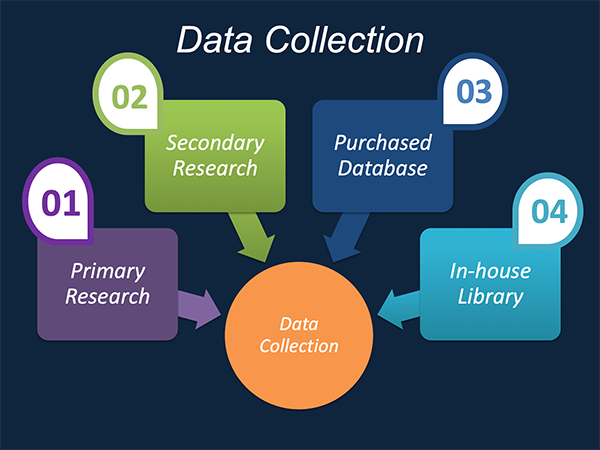
Data Synthesis: This stage includes the evaluation and assessment of all the data acquired from the primary and secondary research. It likewise includes in evaluating the information for any disparity watched while information gathering identified with the market. The data & information is gathered with consideration to the heterogeneity of sources. Scientific and statistical methods are implemented for synthesizing dissimilar information sets and provide the relevant data which is fundamental for formulating strategies. Our organization has broad involvement with information amalgamation where the information goes through different stages:


Market Formulation & Deduction: The last stage includes assigning the data & information in a suitable way in order to derive market size. Analyst reviews and domain based opinions based on holistic approach of market estimation combined with industry investigation additionally features a crucial role in this stage.
This stage includes with the finalization of the market size and numbers that we have gathered from primary and secondary research. With the data & information addition, we ensure that there is no gap in the market information. Market trend analysis is finished by our analysts by utilizing data extrapolation procedures, which give the most ideal figures to the market.
Data Validation: Validation is the most crucial step in the process. Validation & re-validation through scientifically designed technique and process that helps us finalize data-points to be used for final calculations. This stage also involves with the data triangulation process. Data triangulation generally implicates the cross validation and matching the data which has been collected from primary and secondary research methods.





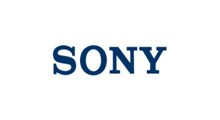

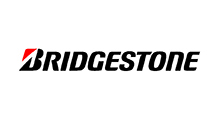

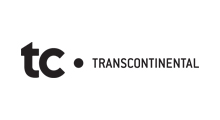















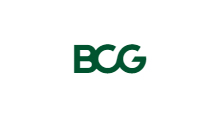


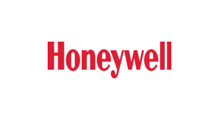

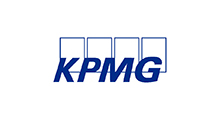
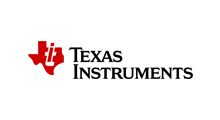



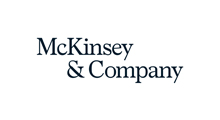

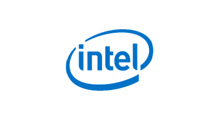







Free Customization
Countries can be added on demand
Free yearly update on purchase of Multi/Corporate User License
Companies served till date

We serve our customers 24x7 for 365 days through calls, emails and live chat options.
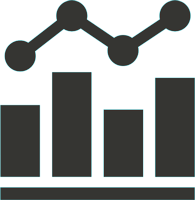
Huge database of exceptional market reports bringing market intelligence to your fingertips.

SSL enabled, we offer you various secured payment options for risk free purchase.